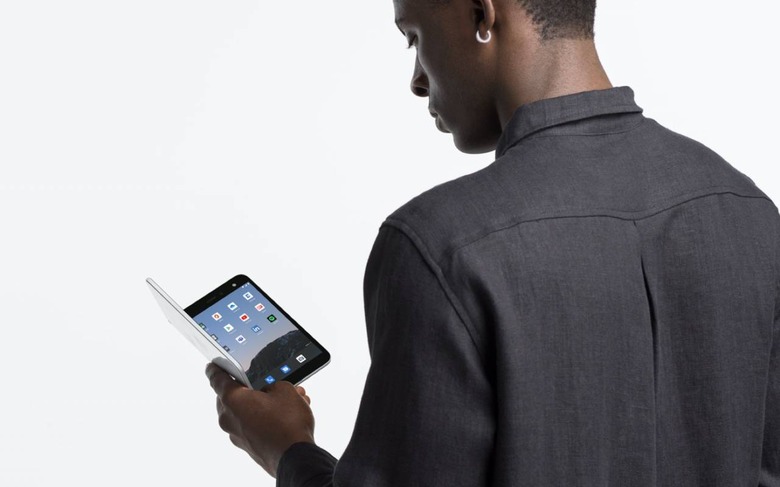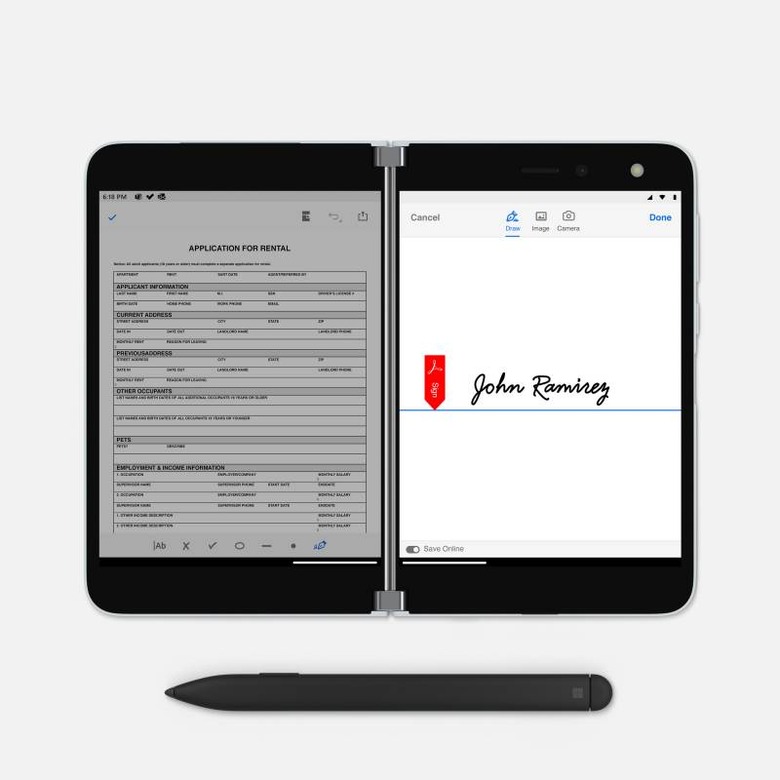Watch Microsoft justify Surface Duo
It's fair to say that Microsoft's newest hardware is proving divisive, with Surface Duo splitting opinion between those who think it's potentially the future of computing, and critics who say it's just too expensive. The dual-touchscreen clamshell will cost a heady $1,400 when it goes on sale in September, and now Microsoft has released its thirty minute briefing video on just why it thinks that's worth it.
If you missed the furore – and, indeed, the months of leaks and rumors about Duo – the basics are that it's an Android phone-cum-tablet. With two displays connected by a 360-degree hinge, it relies on some Android customizations to deliver multitasking.
For example, you could have a different app on each screen; Microsoft has developed App Groups, too, so that you can load both of those apps simultaneously, with just one icon tap. Alternatively, you could have one app spread across both displays, either in portrait or landscape orientation. Another option, for apps designed to tap into multi-screen devices, is a special UI when used with both touchscreens. In Outlook, for instance, the left display could show your inbox headers, while the right display shows a preview of an individual message.

While the usability aspect is straightforward, some of Microsoft's hardware decisions have been less so. Beyond not using a foldable display – like the Samsung Galaxy Z Fold 2, for instance – there's the fact that Surface Duo uses an older Snapdragon 855 chipset. It lacks 5G connectivity, relying on 4G LTE instead, and flagship features such as wireless charging and NFC are conspicuous by their absence.
Those omissions, however, don't detract from the core point of Surface Duo, at least according to Chief Product Officer for Windows and Devices, Panos Panay. In a 30+ minute presentation for the device, he runs through just what went into creating Microsoft's newest hardware, including the engineering behind the special hinge. Panay also outlines the ethos behind why the company believes dual-displays are important.
"Once you're in, you stay in, you don't have to keep disengaging," Panay argues. "When you're in a single screen it's very different. You're dismissing an app, or putting it away, or burying it, and doing something else. In this case, with windowing ... you can see how Windows comes to life, and there's a ton of productivity."

How convincing you find the pitch – and whether it's sufficient to actually encourage you to open your wallet and spend $1,400 or more when Surface Duo goes up for sale – is the big question. Certainly Microsoft isn't the only company pushing new multitasking ideas in mobile, and nor is it the only company with an expensive device to sell in 2020. With Google's involvement, though, there's a solid chance that advanced Android multi-app use will be a reality in everyone's future, even if they're not doing it on a device with the Windows logo on the front.
